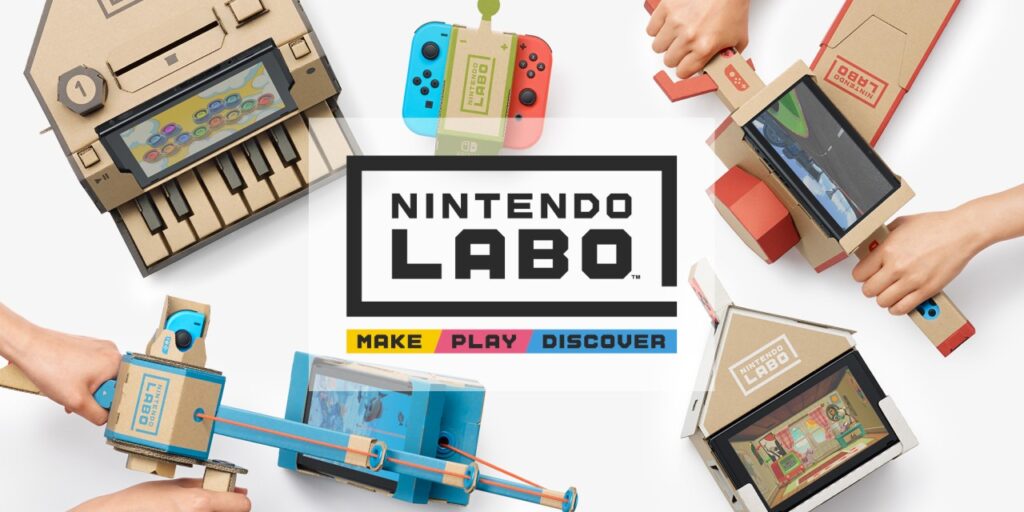On January 17, 2018, Nintendo announced something that shocked and surprised everybody. They announced they were going to release pieces of cardboard. This is an oversimplification of course, but not entirely untrue. Nintendo unveiled that their product to be used alongside with the Switch were DIY cardboard kits, with different mini-games that would interact with the contraptions you would build. After the announcement, the internet blew up a firestorm of memes and reactions, but the consensus was overwhelmingly positive. It’s a callback to people’s childhoods of messing about with their toys, making things, building things, doing arts and crafts; it’s pure imagination. It’s Nintendo Labo.
These are exciting times for Nintendo, with the huge success of the Switch and, what looks to be, an upcoming smash hit for Nintendo Labo. Despite all this success and excitement, especially with Nintendo Labo, I would caution you to still approach it with some skepticism and practicality, at least. This is Nintendo we’re talking about, and they’re not exactly the company who has gotten a home run with every swing of their bat. Of course, no company has, but Nintendo has fallen from grace more often than others.
What is particularly worrisome about Nintendo Labo is the actual build quality. These kits are pieces of cardboard, after all, and with the main target audience being kids, I don’t see how these kits are going to last very long. Anyone who has kids or is around them a lot knows how they can, surprisingly so, just pretty much break anything. It isn’t even the concern of the kids misusing them that may lead to the kits deterioration, but even just from normal use, the kits wouldn’t seem to last that long. In the teaser video, you see them demonstrating so many moving parts for each contraption, from rotating pieces to even a full-sized body suit that has strings attached to your arms and legs. All this with the main material being cardboard. A follow-up concern to the quality is the price of these kits: $69.99 and $79.99. It isn’t exactly going to be cheap to replace them, and that’s putting it lightly.
The main concern, aside from the build quality, is the longevity of Nintendo Labo. Yes, it’s an exciting product; yes, it looks to be a lot of fun; and yes, it may be impossible to find when it releases. However, none of that guarantees that the product will have a long lifecycle. Nintendo is sort of known for releasing a new product line that associates with their consoles but is never to be used again outside of the one game they develop for it. An example would be the Wii Fit Board, which sits in a closet and continues to gather dust in my room as you’re reading this.
The Wii Fit Board capitalized on the family market that the Nintendo Wii had garnered, but this time the focus was staying fit and healthy. It was definitely a different type of product since it used your body weight and how you would balance yourself to control the different mini-games that came along with it. Again, it was a success coming off of the Wii fervor, but not much was seen from the Wii Fit Board since then. Nintendo tried to make a comeback with the peripheral when they launched the Wii U, but it fell flat commercially just like the console itself. There are many more examples going back even further, such as the Wii Motion Plus, Nintendo e-Reader, The Power Pad, and many more. From this, you can see that Nintendo’s track record isn’t exactly one that paints a bright future.
Nintendo Labo is yet to come out, of course, and we’ll never know Nintendo’s plans until we get more announcements and press releases. That doesn’t mean, however, we can’t speculate and observe any potential problems from the initial pitch and history of other Nintendo products. I’m excited to see what Nintendo Labo has to offer and how the larger market will receive the product, but my excitement doesn’t overshadow my cautiousness for pieces of cardboard that will cost me $69.99 and $79.99.









